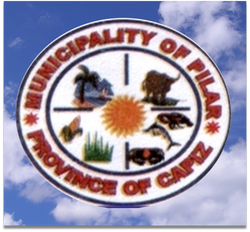History of Pilar
The first settlement of Pilar was located at the mouth Sibala River. The first settlers were people who tried to escape from the tyranny of the Spaniards during the forced labor era. Due to the abundance of raw materials both from land and sea, the people engaged themselves in industries and progress without the dominance and interference of the Spaniards.
The Spaniards took control of the settlement and eventually forced the people to embrace the Catholic Religion. The original Patron Saint of Pilar given by the Spaniards was Nuestra Señora Del Pilar, from where the town got its present name.
During the Spanish Regime, Sibala, now known as Pilar, was once a missionary and military outpost to Panay Island. In 1720, Barrio Aranguel, currently one of the barangays of the President Roxas, became an independent municipality, and Sibala became a part of Aranguel. However, due to frequent Moro raids and poor progress of Aranguel, it was reverted into a barrio in Pontevedra in 1750, and Sibala became a part Pontevedra.
On October 29, 1856, Casanayan was declared by the decree of Governor General Crespo an independent municipality and Sibala became a part of Casanayan. On May 29, 1865 by decree of Governor Primo de Rivera, Sibala was declared as an independent municipality with the official name of “Pilar” in honor of her Patron Saint Nuestra Señora del Pilar.
The Spaniards took control of the settlement and eventually forced the people to embrace the Catholic Religion. The original Patron Saint of Pilar given by the Spaniards was Nuestra Señora Del Pilar, from where the town got its present name.
During the Spanish Regime, Sibala, now known as Pilar, was once a missionary and military outpost to Panay Island. In 1720, Barrio Aranguel, currently one of the barangays of the President Roxas, became an independent municipality, and Sibala became a part of Aranguel. However, due to frequent Moro raids and poor progress of Aranguel, it was reverted into a barrio in Pontevedra in 1750, and Sibala became a part Pontevedra.
On October 29, 1856, Casanayan was declared by the decree of Governor General Crespo an independent municipality and Sibala became a part of Casanayan. On May 29, 1865 by decree of Governor Primo de Rivera, Sibala was declared as an independent municipality with the official name of “Pilar” in honor of her Patron Saint Nuestra Señora del Pilar.

